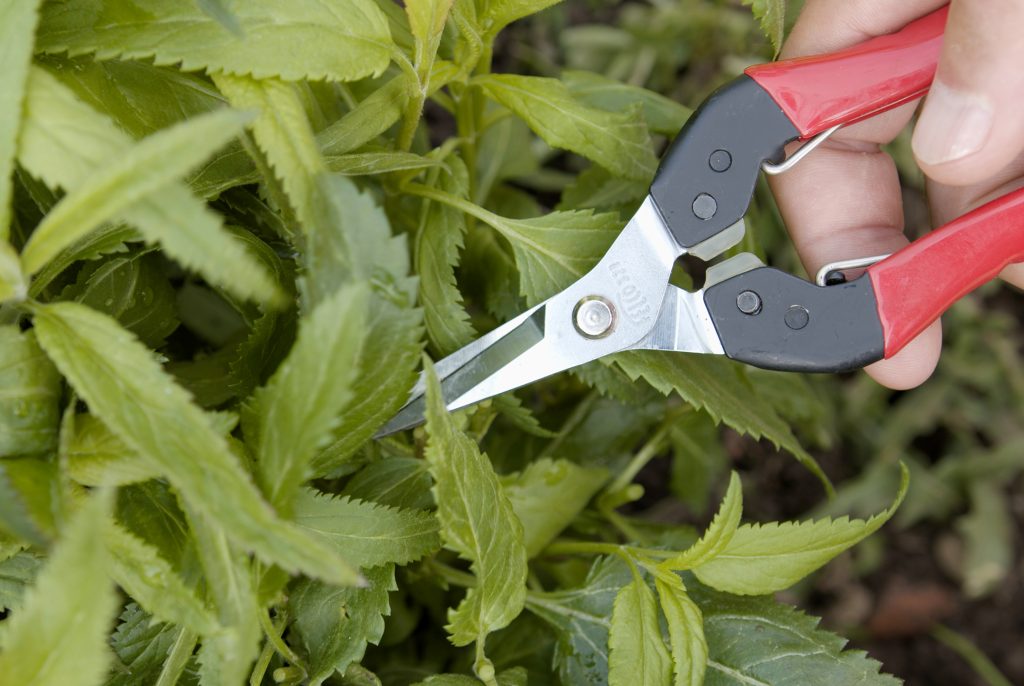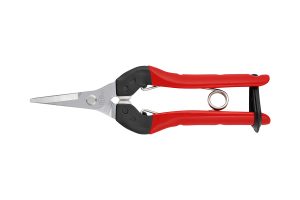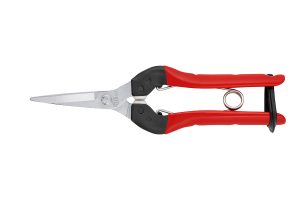
Jean-Luc Pasquier, Master Gardener and #FELCOLover

At flowering time, some branching perennials such as autumn asters, echinaceas or large phloxes tend to bend under their own weight. With targeted pruning at the end of May, these plants form denser bushes and flower more intensely. An overview of this British practice that has recently become popular on the continent.
Chelsea chop is an English expression whose meaning can be summed up as follows: pruning at the time of the Chelsea Flower Show. Our garden expert Jean-Luc Pasquier explains: "Its origin comes from the practice of English gardeners. They experimented with techniques so that herbaceous perennials that tend to collapse under autumn gusts of wind or during rainy summers could withstand the weight of the water contained in the flowers better. By cutting the stems of clumps of certain perennials, they get stockier and the beds are more floriferous!"
But what's the point of pruning a plant that needs to thrive to bloom well? "The idea is to cut back the clumps that are suitable for this pruning towards the end of May, the period corresponding to the famous Chelsea Flower Show. So, I intervene on the length of the stems and when they bloom. In other words, I prune the stems that are already well developed, which corresponds to a brief interruption in vegetation" continues the specialist. The plants then emit new well-branched shoots and continue their vegetation. During this time, those that have not been pruned maintain their normal growth rate and will bloom well before those that have been cut back.
This practice keeps the most vigorous perennials in the garden under control and gives them a more elegant silhouette throughout the season. Jean-Luc Pasquier agrees, "It also allows you to prune perennials at the edge of the bed while leaving an unpruned series at the back. Thus, the plants remain compact in front, while those at the back of the bed can lean on these strong plants at the edge. The flowering will be staggered and will start at the back of the bed. The shortened plants will bloom later, but with a greater number of small flowers. « In effect, pruning acts as a flower bud multiplier. »
This practice can be experimented on many perennials. The best-known ones that enjoy the Chelsea Chop are purple echinacea, panicled phlox, hellebores, Sedum telephium, Solidago, etc. "Hydrangeas 'Annabelle' or summer spirea, as well as many other shrubs, also appreciate this pruning," adds the expert, "just try it!"
Jean-Luc Pasquier's tool selection :
The 177 mm straight chromium blades with rounded ends of the FELCO 321 picking and trimming snips are ideal for all pruning and harvesting work. They are designed to offer optimum comfort, as the shock absorbers and the particularly flexible pin spring of FELCO 321 snips help reduce muscle tension.

With its 190 mm chromium blades, the FELCO 322 picking and trimming snips have the longest reach in our range. They offer maximum comfort during cutting thanks to polyurethane shock absorbers, while their flexible pin spring also helps reduce muscle tension.

An excellent all-round choice, these compact, high-performance pruning shears / secateurs provide outstanding reach and cutting power.

Thanks to the compact design of the FELCO 911 holster, the two pockets keep 2 FELCO tools at hand without interfering with your cutting movements.

Lightweight and comfortable, these gloves made of knitted HPPE fibre guarantee high resistance to cutting. The fingers and palm are coated with nitrile rubber to provide excellent grip and greater strength.

A passionate gardener since his childhood, Jean-Luc Pasquier is a complete horticulturist with a diploma from Lullier in the canton of Geneva. He continued his training in Oeschberg in the canton of Bern where he obtained his diploma and then his federal master's degree. He is a lecturer for plant knowledge in the framework of higher horticultural training. He is also a consultant and horticultural columnist. Passionate about roses, he presides over the International New Rose Competition of Nyon and the group of rose breeders within the World Federation of Rose Societies.

